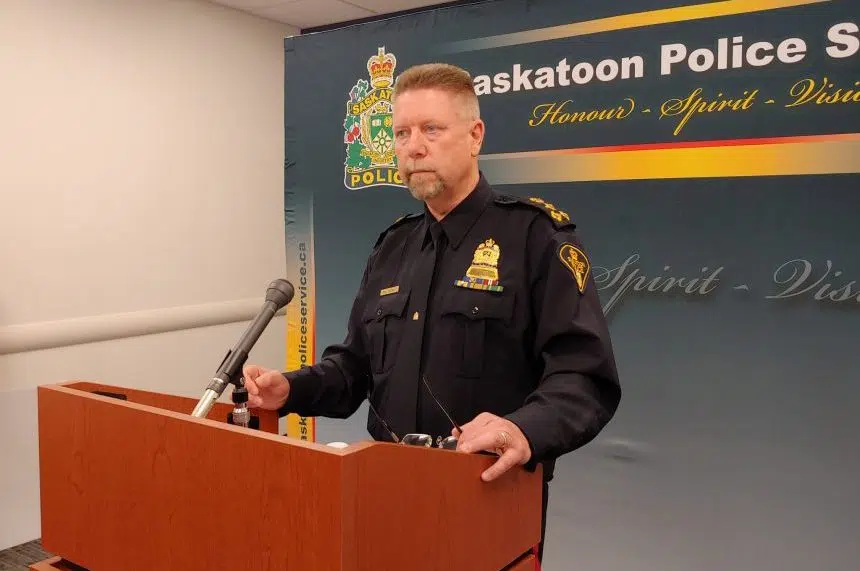Saskatoon Police are looking to a Scottish city for ideas and direction on how to lower the overall crime rate.
According to the “Glasgow Model of Community Safety,” presented Thursday at the Board of Police Commissioner’s meeting, in 2004/05 Glasgow recorded 137 homicides; double the national rate.
That all changed a decade later when that number dropped by about 50 per cent. By 2018, Glasgow had the fewest recorded homicides in a 12-month period in more than 40 years.
According to the model, police in Scotland made a conscious effort to partner with various health, education and social services to create something called the “Violence Reduction Unit;” a network of local agencies and community programs aimed at tackling urban violence.
Saskatoon Police Chief Troy Cooper believes it can also be applied here.
“We feel that violence is what they were trying to address…we can look at that here with our experience around violence, but also if you think about it, with our experience around the crystal meth crisis that we’re facing. We know that without partnerships in health, without a full community response, we’re not going to be successful.”
Some of the key aspects of the model include a comprehensive gang strategy, a focus on reducing drug and alcohol consumption that can contribute to violent incidents, and more education for children in the areas of cyberbullying, sexual harassment and other offensive behaviours.
Cooper says police also need to view their roles in a bigger picture; not just as officials who arrest criminals, put them in jail and leave them to their own devices.
At a family and on an individual level, he explains that police are already trying to identify and remove some risk factors.
“That’s why we’re working, trying to encourage and engage with health for example…we find that chasing people who are committing small property crimes repeatedly is ineffective. We need to be able to do this as a broader community approach.”
However, Cooper is vague about whether the city actually has the ability to activate or implement some of those additional community resources needed.
“I think what’s important is whatever resources we do have -and there’s always limits on resources- whatever we have, has to be working collectively and collaboratively.”
That includes leaning on groups like the Safe Community Action Alliance and the Community Partner’s Table at a higher level.
The report, received as an information item, concludes that the Saskatoon Police Service along with reviewing several other models including Evidence-Based Policing, Community Policing and Hotspot Policing, the Glasgow model suggests further opportunity to partner with additional community organizations.











